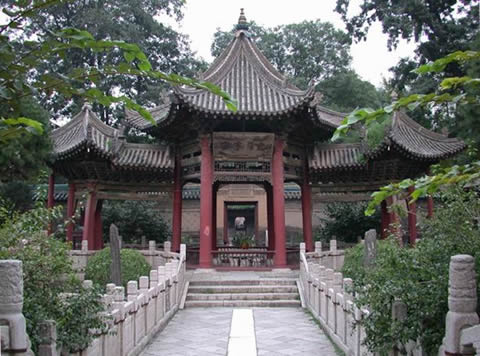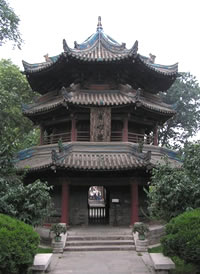Xian Great Mosque

The Great Mosque of Xian is nestled in the Huajue lane in Xian, Shaanxi Province. The Great Mosque of Xian is the biggest and most preserved complete Chinese existent mosque. First built at the Tianbao first year (742 years) during Tang Dynasty, it was rebuilt by Song, Yuan, Ming and Qing, and has formed present scales. The whole mosque has more than 12,000 square meters, the floor space more than 4,000 square meters, keeps the construction mostly in the Ming Dynasty styel. So the Mosque here in Xi'an has much Chinese traditional touch in both its design and artistic outlook; besides the style peculiar to Islamic mosques, this Mosque also holds characteristics of Chinese pavilions with painted beams and engraved ridgepoles.
 The Great Mosque of Xian serves over 60,000 Chinese Muslims in the Xian area. The mosque was the religious center for Arab merchants operating in China. Unlike the common mosques to Arab countries, the Great Mosque of Xian has neither domes nor minarets. The style is almost wholly Chinese, except for the Arabic lettering and decorations that list the 99 names of God and verses from the Koran. Arabs have, for thousands of years, maintained more or less permanent trade routes with mainland China. With this long familiarity, it is not surprising that the first Arab Muslims reached China not long after the Prophet's death in the 7th century. However, the number of Arab traders operating in China was relatively small. It was not until the 13th century, when Kublai Khan expanded the Chinese Emperor westward, that the large numbers of Muslims were forcibly resettled in China as soldiers and artisans. Although most of these central Asian Muslims maintained their cultural heritage, they gradually mingled with the Chinese, creating a distinct minority known as the "Hui people". Inside the Great Mosque are such treasures as hand-copied Korans from the Ming dynasty and a calendar stone called "the Moon Tablet". Although there is no minaret, the "Introspection Tower", a two story pagoda, serves the same function.
The Great Mosque of Xian serves over 60,000 Chinese Muslims in the Xian area. The mosque was the religious center for Arab merchants operating in China. Unlike the common mosques to Arab countries, the Great Mosque of Xian has neither domes nor minarets. The style is almost wholly Chinese, except for the Arabic lettering and decorations that list the 99 names of God and verses from the Koran. Arabs have, for thousands of years, maintained more or less permanent trade routes with mainland China. With this long familiarity, it is not surprising that the first Arab Muslims reached China not long after the Prophet's death in the 7th century. However, the number of Arab traders operating in China was relatively small. It was not until the 13th century, when Kublai Khan expanded the Chinese Emperor westward, that the large numbers of Muslims were forcibly resettled in China as soldiers and artisans. Although most of these central Asian Muslims maintained their cultural heritage, they gradually mingled with the Chinese, creating a distinct minority known as the "Hui people". Inside the Great Mosque are such treasures as hand-copied Korans from the Ming dynasty and a calendar stone called "the Moon Tablet". Although there is no minaret, the "Introspection Tower", a two story pagoda, serves the same function.The Muslems in China has very much the same customs with their brothers and sisters elsewhere in the world. They worship five times per day: at dawn, at noon, in the afternoon, at dusk, and at night. Female worshipers attend their services in a separated place from their brothers, very often at home. Muslims pay great attention to their health and they always wear clean clothes. They are against not only wine, but also pork and animal blood for in Koran pigs have been considered as being “unclean”. In Koran, a man can have four wives and women should wear veils when they are out. However, except a few areas in Xinjiang, the Chinese practise monogamy and women cab be veiless when they go out. Upon his death, a Muslem has to be “thoroughly cleaned”(thoroughly bathed). And The Muslim has to be put on “Ke Fan”(to be covered with a piece of white cloth) and has to be buried without coffin in the ground, often with an imam reciting Scriptures at the funeral.
Questions & Answers:





